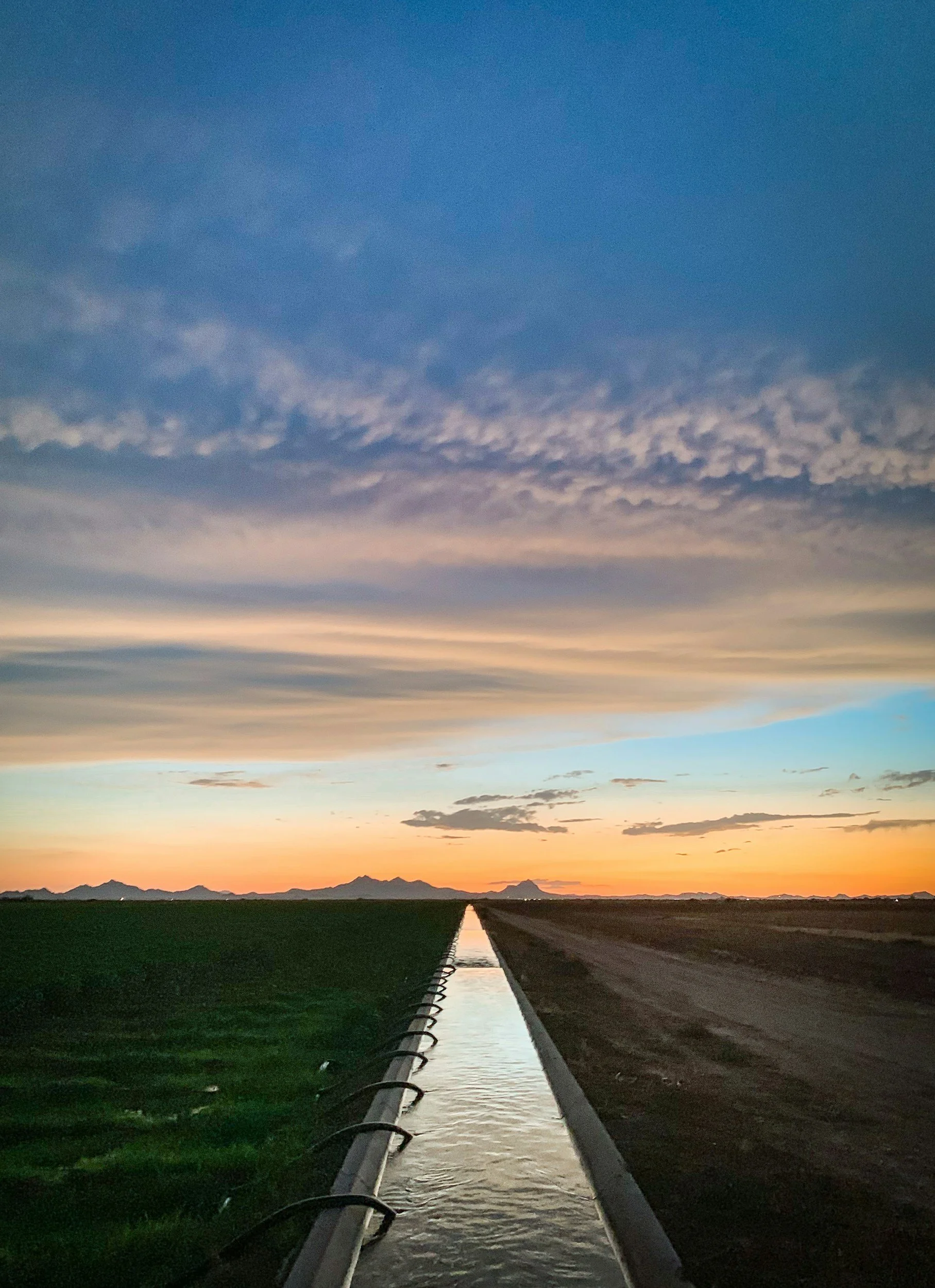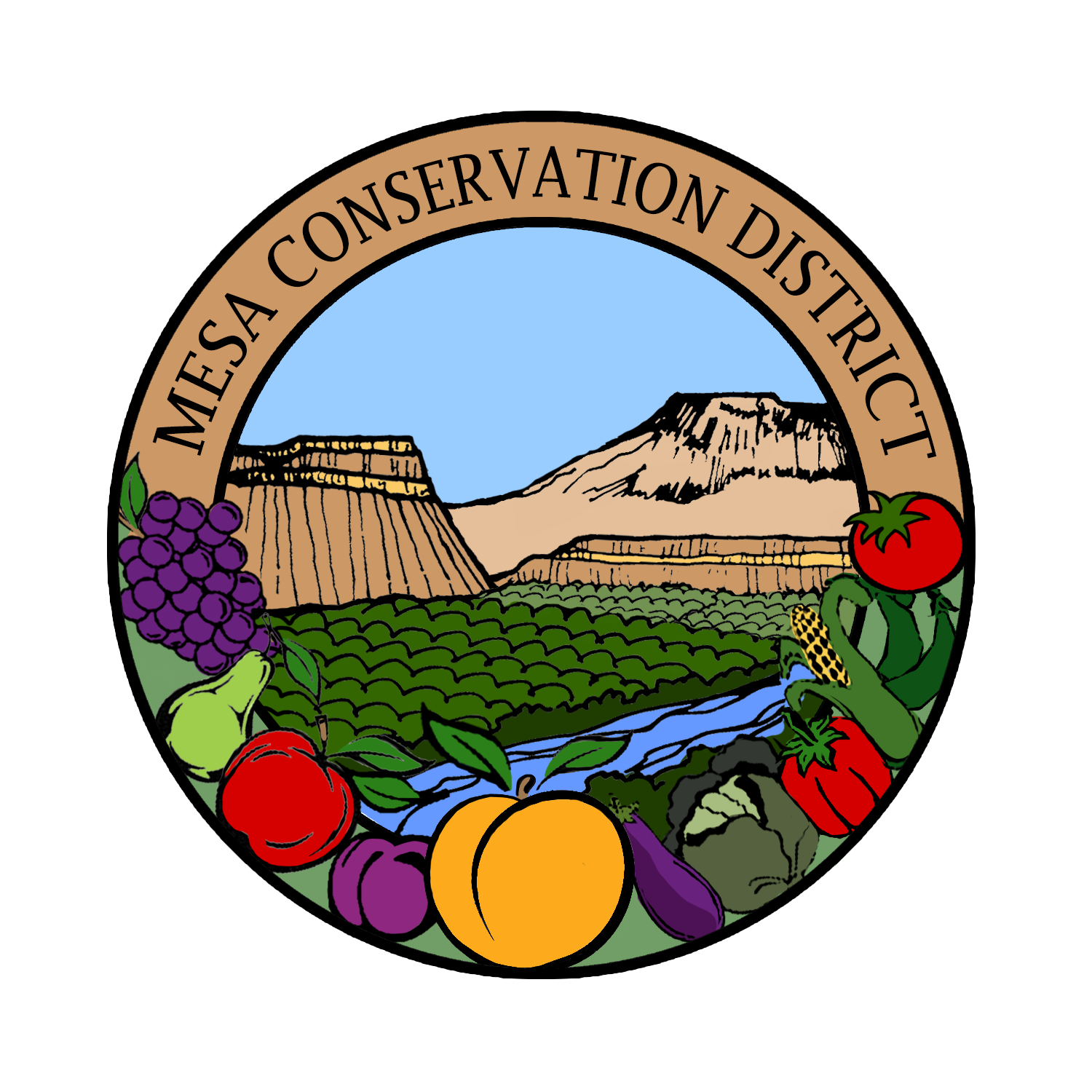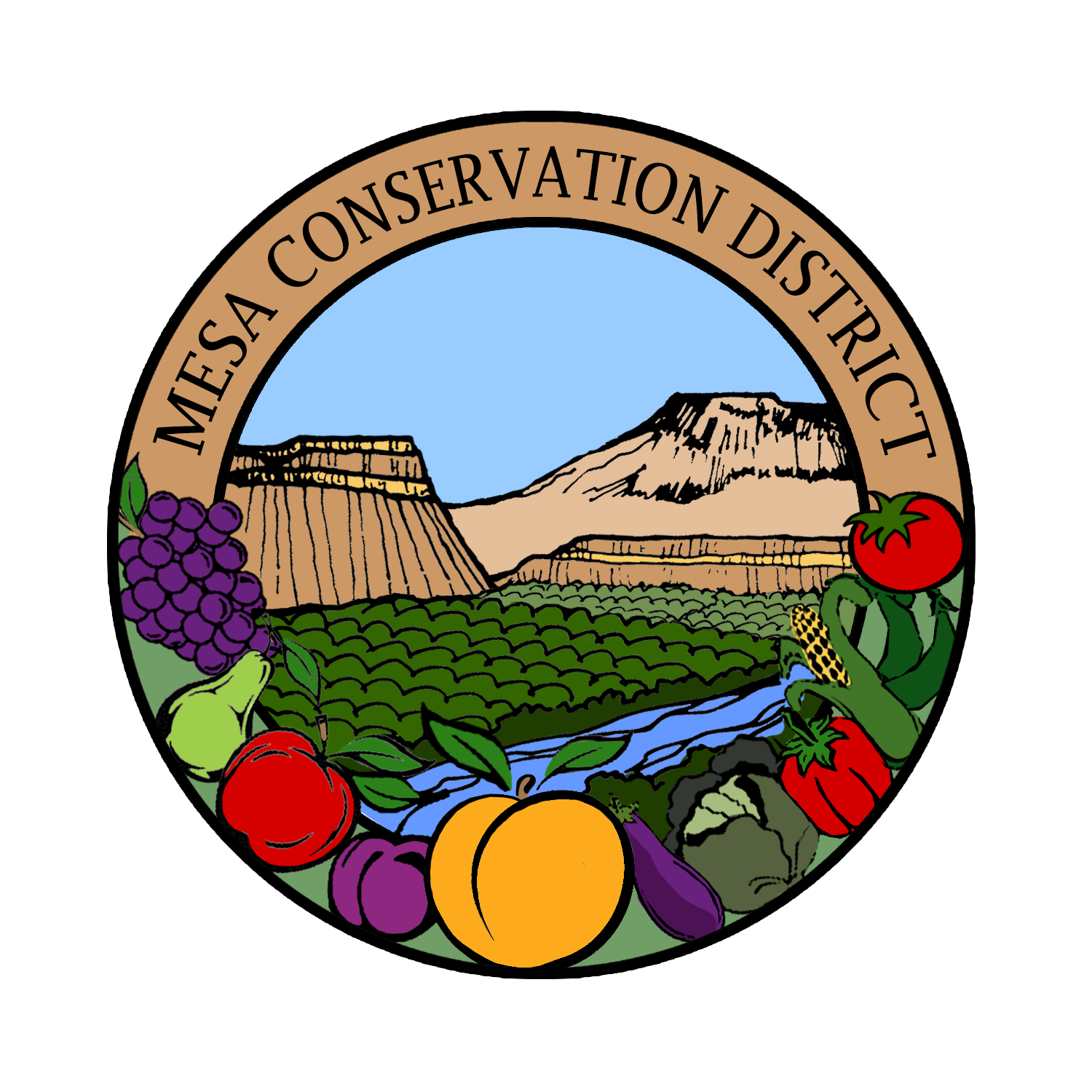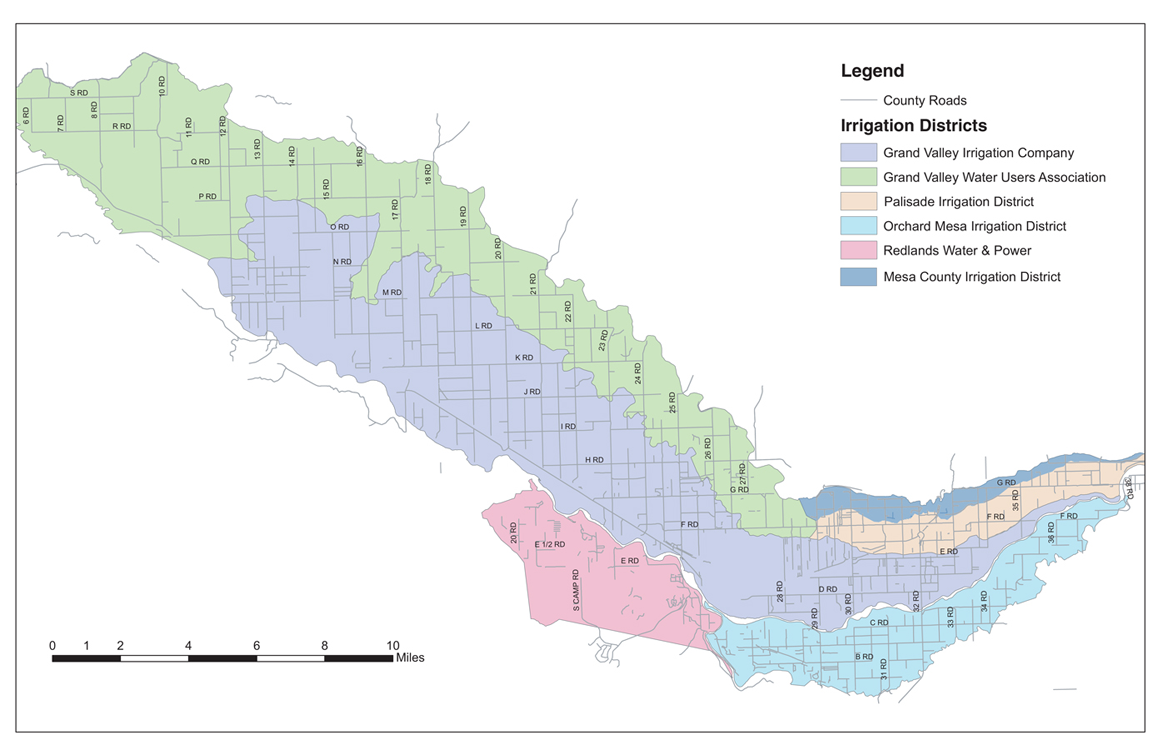
Irrigation Resources
The Irrigation resource page highlights practical tools and strategies to help landowners reduce water loss and improve on-farm efficiency. From upgrading outdated systems to adopting precision irrigation technologies, efficient irrigation supports crop health, conserves water, and protects long-term water availability. This page connects producers with technical resources, cost-share opportunities, and local expertise to support smarter water use and resilient agricultural operations within the Mesa Conservation District. This page is for informational purposes only. Please consult your technical service provider before implementing irrigation practices.
Irrigation Methods
-
Drip irrigation delivers water drop by drop to crop roots. Water is supplied under low pressure through plastic tubing manufactured with emitters to regulate flow rate. Tubing can be placed on the ground or buried beneath the soil surface.
This method of irrigation is water efficient but requires more maintenance. Drip irrigation does not require as much land grading but drip systems can become clogged if irrigation water is high in sediments.
-
Furrow irrigation is a method of watering crops where water is directed into shallow, evenly spaced channels (furrows) that run between crop rows. Furrows are made with a hipper that forms parallel beds, and are usually spaced 30 or 38 inches apart. Water flows from a pump to furrows in lay-flat plastic pipes. Holes are punched in the pipe to obtain the desired flow rate.
Furrow irrigation has a relatively low initial capital investment but can be difficult to apply small amounts of water.
-
Sprinkler irrigation is the application of water under pressure to plants as a spray through nozzles. Pressure is usually obtained from a pump. Equipment can be fixed or continuously move. This method takes many forms, including center pivot systems.
Sprinkler irrigation allows water to be applied at low rates but sprinkler heads can become clogged with poor water quality.
Click the link below to learn more about how Mesa Conservation District is working to promote sustainable and efficient irrigation
Local Irrigation Providers
There are 6 major irrigation water providers serving about 85,000 acres in Western Colorado’s Grand Valley. Below, you can find additional information about each irrigation water provider.
Want to learn more about local hydrology and how it may impact irrigation? Click the button below to learn more.

Irrigation Resources
AquaSpy
Innovative Irrigation Companies
Bollinger and Queen
Central Irrigation LLC
Irrigation Methods and Strategies
Irrigation Scheduling: The Water Balance Approach
Irrigation System Pros and Cons
Micro-Sprinkler Irrigation for Orchards
Seasonal Water Needs and Limited Irrigation




